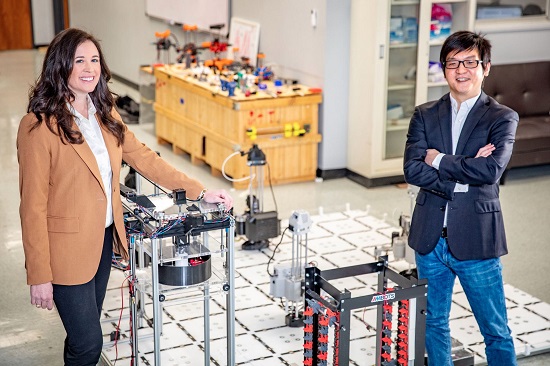 Friday, September 27, 2024
Friday, September 27, 2024  Friday, September 27, 2024
Friday, September 27, 2024 
Applied Research Associates, a research and engineering firm headquartered in New Mexico, awarded faculty in the College of Engineering nearly $3.5 million to study the most expedient ways to 3D print horizontal mission structures for the U.S. military. The faculty team will work to identify optimum design patterns and indigenous materials that can be used in horizontal construction projects (such as creating culverts, T-walls and Jersey barriers), as well as develop printing instructions for mobile robots that can be deployed quicky on site.
Michelle Barry, an associate professor of civil engineering, will serve as the principal investigator of the two-year grant. Wenchao Zhou, an associate professor of mechanical engineering, and Cameron Murray, an assistant professor of civil engineering, will serve as co-PI’s.
Barry, who oversees the Granular Materials Research Laboratory, will have a number of responsibilities. Among them will be exploring new material structures and geometric configurations to optimize performance and efficiency. This will include examining biomimetic structures – meaning they mimic naturally occurring designs, such as honeycomb patterns — that can reduce material use while increasing strength.
Barry will also be cataloguing and characterizing a range of indigenous soils to determine their suitability for incorporation into concrete. The idea is that an expeditionary force will be able to deploy and make use of local materials in horizontal construction rather than shipping cement and aggregates across vast distances. The force would instead have a convenient catalog of recipes for concrete mixes adapted to local conditions with the assurance it can be pumped through nozzles and 3D printed with requisite robots on site.